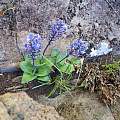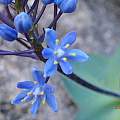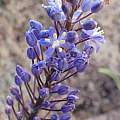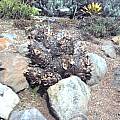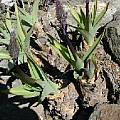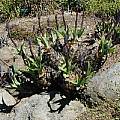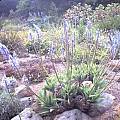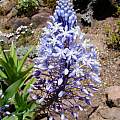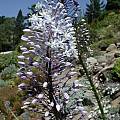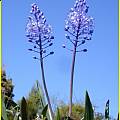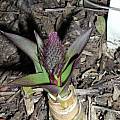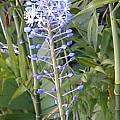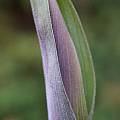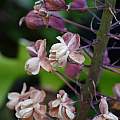Merwilla is one of the four sub-Saharan African genera in Hyacinthaceae previously included in Scilla. Scientific studies using molecular systematics have shown that what we know as Scilla appears to have multiple evolutionary origins. Therefore it seemed reasonable to recognize each coherent group as separate genera. The other three are Pseudoprospero with one species, Schizocarphus with one species, and Spetaea with one species. The two species listed below are from the eastern seaboard and escarpment of southern and east subtropical Africa, on damp cliffs or in steep rocky grassland. They are summer-growing, winter-dormant with one scape per season, leathery leaves with smooth margins, blue to mauve flowers with stamens shorter than tepals, a pale ovary, and whitish and papery seeds. Unfertilized flowers drop off. The color of the seeds is unique in a family otherwise characterized by black or dark brown seeds.
Seeds must be fresh when sown, as old seed does not germinate; they probably have a 6 month viability period. Seed should be sown in spring on the surface or barely covered, and germination will be rapid (7-10 days). Small bulbs will form before winter, at which time they will become dormant, coming into growth again the following spring. Seeds of M. plumbea takes 4-7 years to mature (Bill Dijk).
Merwilla dracomontana (Hilliard & B.L.Burtt) Speta, syn. Scilla dracomontana Hilliard & B.L.Burtt, is a dwarf species with stiff hairs on the scape found from the foothills of the KwaZulu-Natal and Eastern Cape Drakensberg. It easily hybridizes with M. plumbea. Photos from iNaturalist in the public domain taken by Peter Warren in October at Garden Castel Nature Reserve in KwaZulu-Natal.
Merwilla plumbea (Lindl.) Speta, syn. Scilla plumbea Lindl., from southern and east subtropical Africa, has hispidulous or glabrous foliage but a consistently glabrous scape. In 2019 in a paper by John Manning entitled Systematics of the sub-Saharan African squills: The genera Merwilla, Pseudoprospero, Schizocarphus and Spetaea (Hyacinthaceae: Scilloideae) two subspecies were recognized. Merwilla plumbea ssp. plumbea, syn. Scilla natalensis, Planch. included the subtropical Merwilla lazulina (Wild) Speta. Merwilla plumbea ssp. kraussii (Baker) J.C.Manning, syn. Merwilla kraussii (Baker) Speta, was recognized for dwarf forms of this species from the southeastern coast and near-interior of South Africa.
It appears to be hardy to Zone 7 and tolerant of rain during the winter although it is not hardy and will die with hard frost. With regular water it may remain evergreen. It has been described as flowering in spring, summer, and fall perhaps depending on when it received water. Sometimes the leaves appear after the flowers. It was the subject of an extensive discussion on the PBS list in March 2003. The first picture is of a large clump in the UC Botanical Garden when they were dormant followed by more pictures of spring blooming plants at UC Berkeley in early and later phases of bloom and showing how they need a lot of space. The first three photos were taken by Liz Waterman and the fourth by Kelley Macdonald. The last photo was contributed by theUC Botanical Garden showing a nice inflorescence.
The first picture of the flowers with the sky in the background was taken by Bill Dijk. The second photo by Jana Ulmer shows a first bloom emerging in March 2003 from a plant started from seed in December 1997. The third picture is of one blooming in the southern California garden of Doug Westfall where it is growing in a container. The fourth picture taken by [Uluwehi Knecht|Uluwehi Knecht]] captures the beautiful color and texture of fresh spring growth. The last photo by Martin Bohnet shows ripe seed capsules opening up. Collecting seeds is not trivial, as the dry seed capsules tend to hurl the seeds away when brushed gently.

